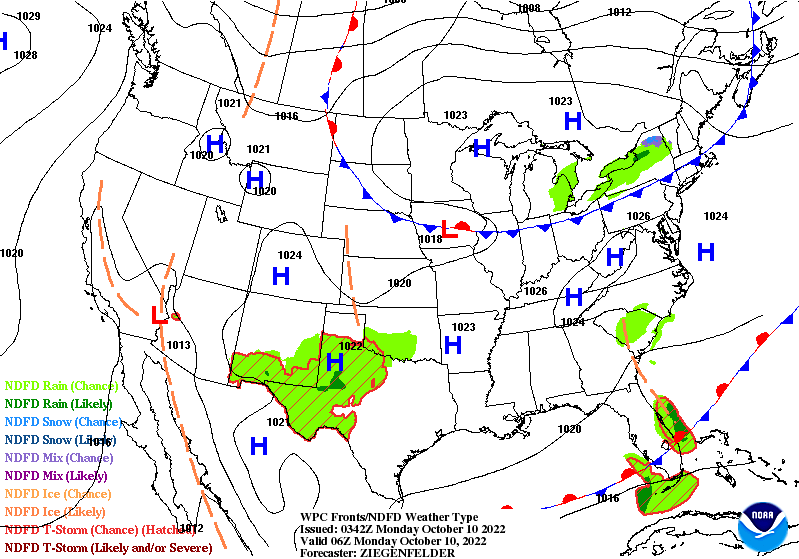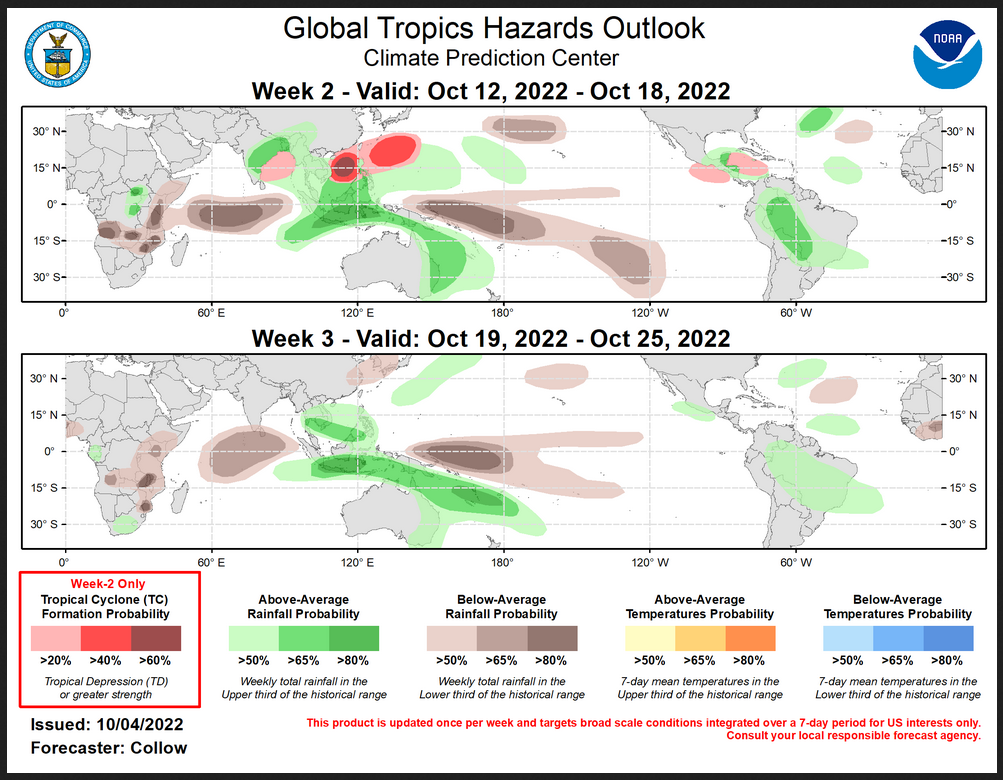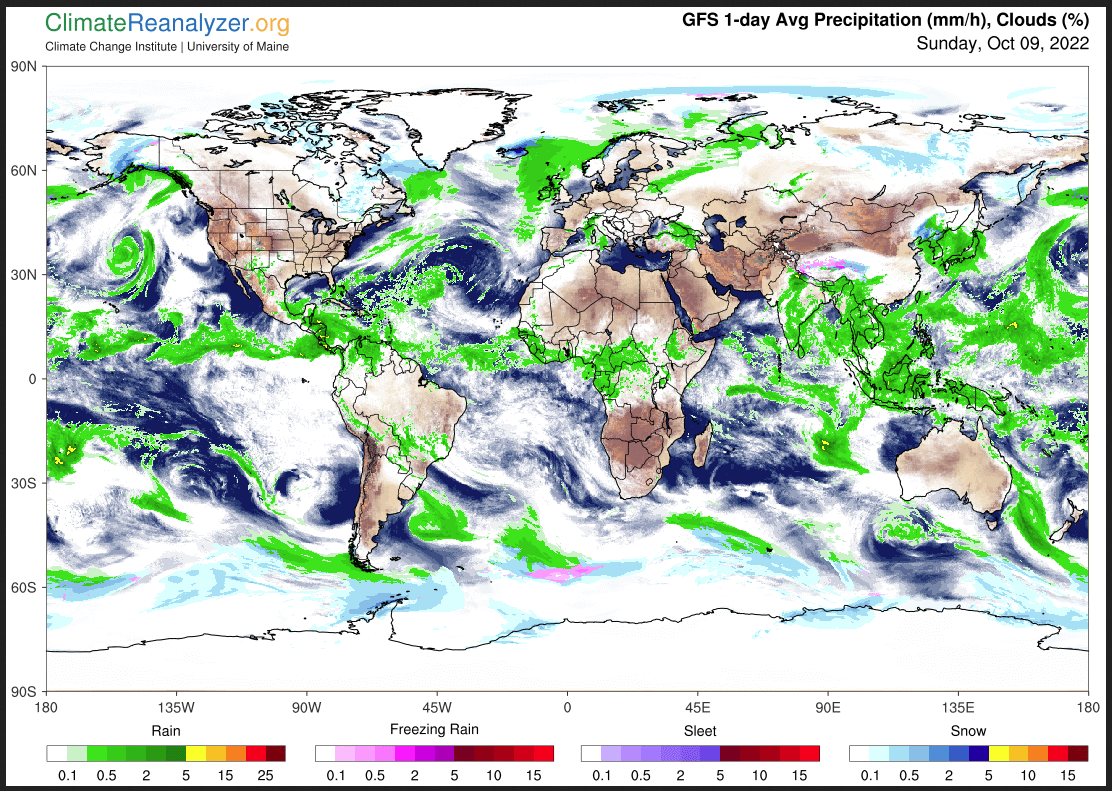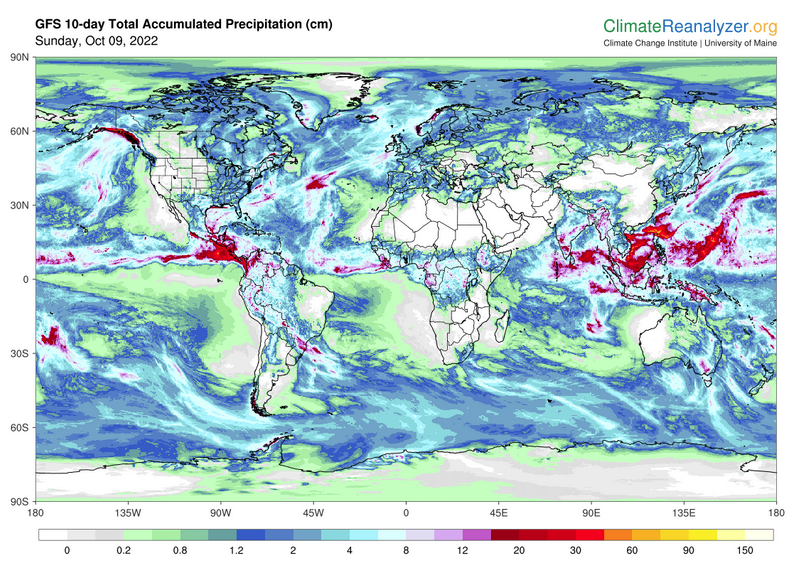Here is what we are paying attention to this evening and the next 48 hours from this afternoon’s NWS Forecast.
...Pleasant weather continues in eastern third of nation as temperatures climb closer to average... ...Frontal system moves onshore Pacific Northwest Monday evening, bringing end to warm and dry conditions... ...Big warm-up across the Plains as temperatures soar into the 70s and 80s early this week...
Continuation of the NWS Short Range Forecast (It is updated twice a day and these updates can be found here.
...Daily showers and thunderstorms continue across the Southwest, with a Slight Risk of Excessive Rainfall in effect through Monday across southern New Mexico and western Texas... Pleasant weather will close out the weekend across the eastern third of the nation, with surface high pressure dominating the pattern, leading to continued cool and dry conditions. Chilly daytime temperatures on Sunday will remain in the upper-50s to low-60s across much of the Northeast and Ohio Valley, with slightly warmer highs in the upper-60s further south across the Mid-Atlantic and 70s in the Southeast. Night-time lows may also come close to freezing across higher elevations of the Appalachian region, leading to the issuance of widespread Frost Advisories through Monday morning. Temperatures in the Ohio Valley will gradually rise closer to average and even slightly above-average on Monday and Tuesday, with highs in the mid-70s to low-80s; areas further east in New England and the Mid-Atlantic will remain in the 60s and low 70s. Lake-effect rain showers will continue to develop across the Upper Great Lakes and interior Northeast as a weak cold front moves south through the region, bringing gusty winds of 20�30 mph blowing across the warmer Great Lakes water. Higher elevations in interior New England and upstate New York may see some wet snow on Monday morning, though no accumulation is expected. The next major headline will be the arrival of a front moving onshore the Pacific Northwest on Monday evening, bringing an end to the warm and dry conditions that have been anchored in place by an upper-level ridge this past week. Rain will develop over parts of the Pacific Northwest into the Northern Rockies on Monday evening, and by Tuesday, rain (mixed precipitation possible in higher elevations) will be possible over parts of the Northern Rockies and Northern High Plains. Further east, temperatures continue to be on the uptick across the Plains and Midwest ahead of the aforementioned potent cold front that will sweep through the region midweek, with highs soaring into the mid 70s and low 80s on Monday and Tuesday. Prior to the arrival of the frontal boundary, warm, moist air will surge northeastward into the region, leading to the potential for showers and thunderstorms on Tuesday afternoon and evening. Daily showers and thunderstorms will continue across the Southwest and western Texas on the east side of a lingering upper-level low that is allowing for moisture-rich air to surge northwestward, causing heavy rainfall rates and isolated instances of flash flooding, particularly in areas of sensitive terrain and across burn scars. As a result, a Slight Risk of Excessive Rainfall has been issued for southern New Mexico and southwestern Texas on Sunday, with the threat shifting eastward on Monday into primarily western Texas. Furthermore, high temperatures will remain below normal, with temperatures ranging from the mid-60s to the low 70s. Elsewhere, a weak front and easterly flow off the Atlantic will allow showers and thunderstorms to develop over parts of southeastern Florida through Tuesday.
Current forecast of heavy precipitation (Updates can be found HERE)
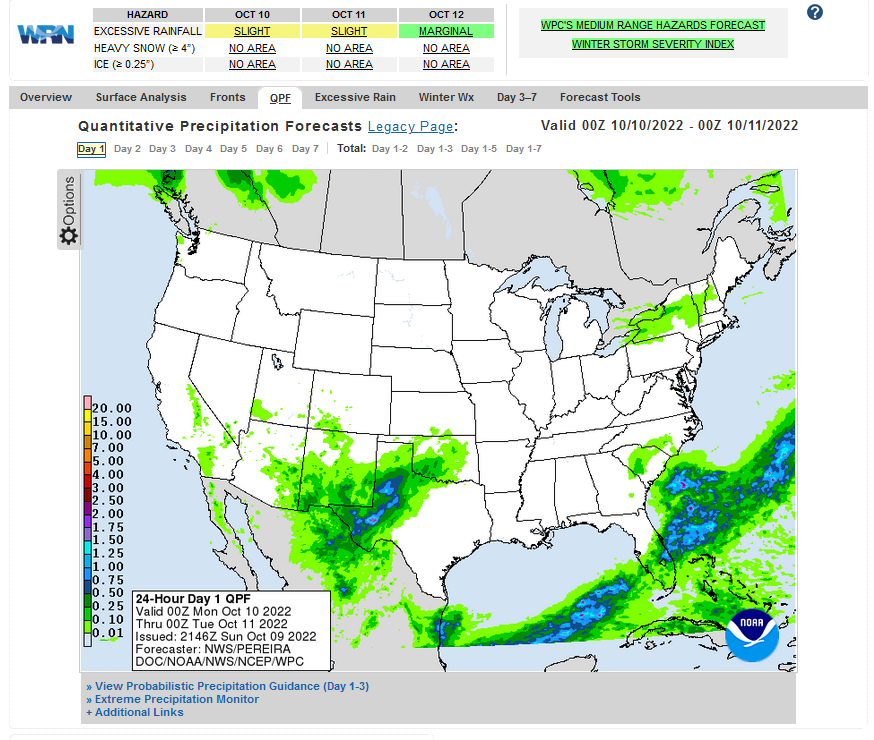 Maps that relate the forecast to geography can be found by clicking Here for Day 1 and Here for Day 2.
Maps that relate the forecast to geography can be found by clicking Here for Day 1 and Here for Day 2.
Here is a 60-hour animated forecast map that shows how the short-term forecast is expected to play out
If it needs to be updated click here.
HAZARDS OUTLOOKS
Click here for the latest complete Day 3 -7 Hazards forecast which updates only on weekdays. Once a week probably Monday or Tuesday I will update the images. I provided the link for readers to get daily updates on weekdays. Use your own judgment to decide if you need to update these images.
Worldwide Tropical Forecast
(This graphic updates on Tuesdays) If it has not been updated, you can get the update by clicking here This is a new approach and covers weeks 2 and 3 not weeks 1 and 2. It has more information but I am having trouble getting used to it. As usual, it comes with a discussion which is below
Detailed Maps and Reports for the Western Atlantic and the Pacific Oceans
Below are three maps that summarize the situation for the Atlantic, Eastern and Central Pacific. Additional information can be accessed by clicking HERE
First the Atlantic
Click to view the forecast map and have access to additional information https://www.nhc .noaa.gov/gtwo.php?basin= atlc&fdays=5
Then Eastern Pacific
Click to view the forecast map and have access to additional information https://www.nhc.noaa.gov/gtwo.php?basin=epac&fdays=5
Then Central Pacific
Click to view the forecast map and have access to additional information https://www.nhc.noaa.gov/gtwo.php?basin=cpac&fdays=5
And the Western Pacific
Click to view the forecast map and have access to additional information https://www.metoc.navy.mil/jtwc/jtwc.html
Some Intermediate-Term Outlooks
Links to “Outlook” maps and discussions for three time periods. Days 6 – 10, Days 8 – 14, and Weeks 3 and 4. An outlook differs from a forecast based on how NOAA uses these terms in that an “outlook” presents information from deviation from normal and the likelihood of these deviations.
You have to click on the links because they do not update automatically and I do not want to have stale images in the article. But it is not difficult to click on a link and you get a large image plus a discussion. On Fridays in a separate article, we will show the images and provide a link in this article that article. But remember what you will see is the images as of Friday. But here you can get the current images simply by clicking on them. Then hit the return arrow at the upper left of your screen to return to the article. You will not find this information easily anywhere else.
Right now you can find these maps here (We show them every Friday there but you can click above and find them).
Worldwide Weather
Below is the current or short-term precipitation forecast which can be updated by clicking HERE Additional maps can be obtained H ERE.
Month to Date Information
Month to date Temperature can be found at https://hprcc.unl.edu/products/maps/acis/MonthTDeptUS.png
Month to date Precipitation can be found at https://hprcc.unl.edu/products/maps/acis/MonthPNormUS.png

